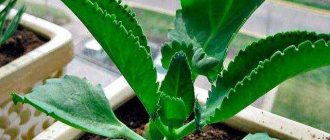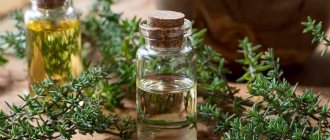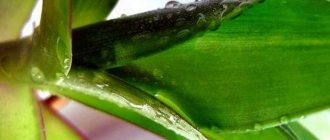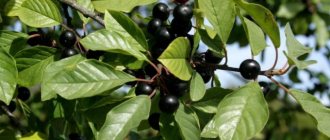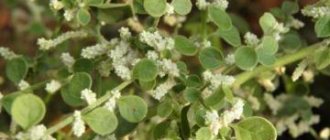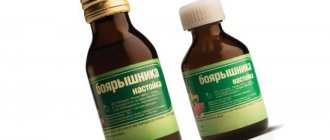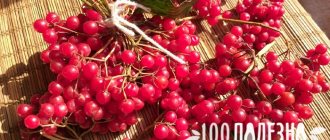Hawthorn fruits and flowers are extremely beneficial for health. Their properties are used for the prevention and treatment of diseases of the heart, blood vessels, normalization of blood pressure and digestion, against fatigue and insomnia, and to eliminate the consequences of nervous strain. Berries of wild varieties were used in Ancient China and Asia. In the 16th century, cultivated plant species were developed. At first, the beneficial properties of hawthorn eliminated loose stools due to dysentery. Then they began to use it to improve the functioning of the heart and the condition of blood vessels.
Composition of medicinal plant
The exact chemical composition that explains the beneficial properties of hawthorn is still unknown. It is believed that the therapeutic effect is due to flavonoids, plant polyphenols. They give fruits color, help eliminate fragility of blood vessel walls, and neutralize free radicals in the body.
- quercitrin maintains elasticity, reduces capillary permeability, has antitumor and antioxidant effects;
- Quercetin is a wonderful means of preventing and treating cerebrovascular disorders and cardiovascular diseases. Sufficient intake of quercetin reduces the risk of cataract formation.
- hyperoside increases the utilization of glucose, increases the use of oxygen, enriches the heart with potassium ions, increases the contractility of the myocardium, the middle layer of the heart muscle, and the magnitude of cardiac output.
- Vitexin dilates blood vessels, accelerates metabolic processes in the heart muscle.
Hawthorn flowers and fruits are beneficial due to the properties of the acids they contain:
- Ursolova has a wound-healing and anti-inflammatory effect;
- oleanolic acid tones and enhances blood supply to the heart and brain;
- chlorogenic has an anti-sclerotic effect, is useful for normalizing kidney and liver function, and has a choleretic effect.
- Coffee tea has pronounced antibacterial properties and promotes the secretion of bile.
The fruits of the plant contain a lot of carotene, provitamin A, as well as vitamins C, E, K. Some varieties are comparable in the amount of carotene in the berries to carrots or rose hips. The fruits contain sugars, as well as sorbitol, which is recommended in case of diabetes.
High content of potassium, calcium, magnesium, iron, as well as microelements manganese, copper, zinc.
Freezing reduces the amount of tannins, the berries become sweeter and less tart.
Cosmetology
The plant helps improve the condition of skin and hair, get rid of acne, and prevent the occurrence of inflammatory processes in the subcutaneous tissue.
For cosmetic purposes, hawthorn is used as follows:
- For face . Hawthorn extract is included in facial skin care cosmetics. Based on it, cleansers, masks and lotions are made. They have a positive effect on the skin: moisturize, increase smoothness and elasticity.
- For hair . Hair rinses, shampoos and conditioners often contain extracts of hawthorn leaves and fruits. The plant helps strengthen weakened hair and get rid of oily shine.
Cosmetics are especially useful in the autumn-spring period, when skin and hair are least resistant to bad climatic factors and external infectious agents.
Hawthorn is a common cosmetic product. It allows you to strengthen hair health and improve skin condition.
Medicinal properties of hawthorn
Taking the fruits and flowers of the plant in the form of infusion, tincture, or decoction benefits the entire body and has a complex effect on various organs and systems.
Heart . Hawthorn has a vasodilating effect, benefits the ability to tone the heart muscle, and ensure sufficient oxygen supply. Reduces frequency, establishes rhythm, increases the strength of heart contractions. Reduces the excitability of the heart, relieves fatigue, improves coronary blood flow and cerebral circulation.
Medicinal forms of hawthorn are useful in reducing the manifestations of mild forms of atrial fibrillation and tachycardia.
Vessels . The plant normalizes blood clotting, cholesterol levels, and prevents the formation of atherosclerotic plaques. It is used in case of vascular spasm.
Nervous system . It has a sedative (calming, but without the onset of drowsiness) effect; the useful plant reduces the excitability of the nervous system, helps eliminate insomnia, and helps normalize sleep.
Digestive system . Taking infusions and tinctures helps with gastritis in any form, flatulence, and in case of difficult digestion in children. They are used to eliminate loose stools.
Flowers and fruits of the plant help cope with headaches , dizziness, and shortness of breath. The antioxidant effect prevents the formation of tumors of various natures, improves immunity, and helps to quickly restore strength after infectious diseases.
Nursing mothers use the beneficial property of hawthorn to stimulate milk production .
The use of the plant in cosmetics helps restore the natural moisture of the skin, tones, relieves swelling, and eliminates the manifestations of age-related changes.
When can hawthorn cause harm?
Even the most useful plant has contraindications.
Violation of the dosage can cause:
- Heart rhythm disturbances;
- Vomiting, cramps in the intestines;
- Decreases blood pressure, so hypotensive patients should not take it.
- Contraindicated after a stroke, with renal failure, peptic ulcer disease, for pregnant and lactating women.
- If you are taking heart medications or your job requires attention, then beware of taking them without a doctor’s prescription.
- Motorists should not use the plant tincture at all. Even in small doses, the drug can reduce the driver’s concentration and cause drowsiness.
Contraindications to the use of drugs are traumatic brain injuries, brain diseases, and allergies to drugs.
Pharmacy products
To prepare medicines with a number of useful properties, flowers and fruits of common hawthorn, prickly, blood-red and other small-fruited species are usually used. They have been better studied and contain a significant amount of compounds that normalize heart function.
Hawthorn fruits are produced in various dosage forms: plant materials, powder, lozenges, tincture, extract. They are useful for eliminating arrhythmia, they are used to calm the central nervous system, lower cholesterol levels, normalize blood clotting, increase milk production, and eliminate digestive disorders in infants.
Flowers have a better ability to lower blood pressure than fruits.
Hawthorn tincture is prepared from crushed dry fruits in 70% alcohol.
Cardiovalen , drops for oral administration, due to the adonizide, valerian tincture, and hawthorn extract included in the composition, are useful in increasing the force of heart contractions and have a sedative effect.
Valemidin , alcohol drops to eliminate spasm of smooth muscles of blood vessels and internal organs, have a sedative effect.
Fitorelax , available in tablet form, contains valerian rhizome and hawthorn flower extract. It is beneficial due to its sedative properties, helps to cope with insomnia and increased nervous excitability.
Cedarvit in the form of an elixir, a non-dosed liquid dosage form, tones, increases the body's resistance to harmful influences, and helps to quickly cope with fatigue. Contains flowers and fruits of hawthorn, birch buds, pine nuts, honey, chokeberry berries.
Amrita , an elixir in the form of a mixture of alcohol-water extracts of plant materials of rose hips, elecampane, ginger, cardamom, juniper, thyme, licorice and hawthorn. Its benefits and medicinal properties are tonic and restorative effects.
Demidov syrup has a choleretic effect, eliminates spasm of smooth muscles, reduces the formation of gases during flatulence, and stimulates peristalsis. Contains hawthorn fruits, calamus, birch buds, oak bark, oregano.
Cooking
Boyarka berries are accepted in fresh and heat-treated form. From them you can prepare:
- Jam . Helps strengthen the immune system and reduce the risk of developing respiratory infections (including pneumonia).
- Wine . In Rus' it was considered an integral component of the feast. Hawthorn wine effectively fights atherosclerosis and high blood pressure. The main thing is to normalize consumption (up to 100-150 ml per day).
- Compote . Helps saturate the body with vitamins during winter, which allows you to get a boost of vigor and good mood.
There are over 1000 recipes for jams, compotes and wines made from hawthorn fruits that will please any gourmet.
How to brew hawthorn at home. Juice, tea, infusions, tincture
During the season, it is useful to drink diluted juice from fresh fruits. It improves blood circulation and normalizes the functioning of the digestive system.
Hawthorn tea recipe.
- In the evening, put 20-30 berries in a thermos, you can add rose hips, and brew 1 liter of boiling water.
In the morning, healthy tea is ready. It is better to brew the fruits whole, as this way they retain more benefits.
An infusion is prepared from the dried fruits and flowers of hawthorn, which have many beneficial properties.
Homemade hawthorn infusion recipe:
- Brew whole berries with boiling water and leave overnight in a thermos at the rate of a couple of handfuls of fruit per 1 liter of boiling water.
Take a third of a glass an hour before meals 3-4 times a day. Its properties are useful for arrhythmia, angina pectoris, and for eliminating nervous excitement.
If you chop the berries, you can prepare the infusion faster:
- Brew 1 tsp. chopped berries with a glass of boiling water. After half an hour, the home remedy is ready.
Take 1/3 glass an hour before meals.
Hawthorn tincture . Prepared from crushed dried fruits or flowers:
- Infuse 4 tbsp. vegetable raw materials in 2 glasses of vodka for two weeks, strain.
Take 25-30 drops with water an hour before meals.
The flower tincture has more medicinal and beneficial properties for getting rid of hypertension and angina pectoris.
What do we know about hawthorn?
In Russia you can find more than 20 species of plants (pinnate, blood-red, Altai, one- and five-pistillate and others). They are so unpretentious that they grow along river banks, forest edges, sparse forests, slopes, among mixed bushes in forb-grass meadows, hayfields, and pastures.
Some of them are cultivated in gardens and parks. Thanks to its thorns, the plant can easily serve as a hedge. Apparently, because of its thorns, in English-speaking countries hawthorn was called prickly apple tree, white thorn or may bush.
By the way, in ancient times people often attributed medicinal properties to these thorns. For example, the Buryats waved thorny branches of a bush over the cradle of a sick child, driving away the evil forces of the disease.
The plant received its Russian name - hawthorn - for its beauty during flowering and fruiting. He was also called the boyarka, noblewoman, hawthorn, glot or forest glod.
Hawthorns belong to the Rosaceae (pink) family, which includes apples, pears, plums, and cherries. This relationship is especially noticeable in the flowering phase, when the bushes stand like a bride in a veil, completely white, covered with millions of large flowers. True, it is better to admire this beauty from afar, since up close you will feel a specific unpleasant smell.
In ancient Greece and Rome, to ensure a happy marriage, wedding guests attached plant inflorescences to their clothes, and the bride carried a flowering branch in her hand. To protect the house from evil spirits, the ancient Greeks hung thorny branches from the gates.
The Romans, knowing the beneficial properties and uses of hawthorn, placed its leaves in the cradle of a newborn to protect against evil spirits. But in Medieval Europe, people believed that this useful shrub brought misfortune, and was considered one of the favorite plants of witches.
Use of hawthorn for heart diseases
The plant is widely used to treat heart diseases. The symptoms are different - increased fatigue, weakness in the absence of physical activity, night rest does not restore strength. Impaired cerebral circulation causes fainting and loss of consciousness. Sudden swelling, shortness of breath, a feeling of tightness in the chest, especially when lying down. If these symptoms appear, be sure to consult a doctor.
Heart failure
When the heart muscle loses the ability to contract strongly, other organs experience oxygen starvation. To normalize blood circulation, take hawthorn, which has the beneficial property of preventing fatigue of the heart muscle and having a tonic and contraction-enhancing effect.
Tea balm with hawthorn:
- Add 2 tbsp to 100g of black tea. rose hips, 1 tsp. hawthorn berries, 1 tsp. motherwort, 1 tsp. peppermint, 1 tsp valerian, 1 tsp. chamomile flowers.
Brew and drink like regular tea.
Hawthorn juice.
- Wash a glass of fresh or thawed fruit after freezing, chop it, add a little water, heat it to +30C. Squeeze out the juice through cheesecloth with a spoon.
Take 1 tbsp. an hour before meals. Use the remaining cake for brewing and preparing infusion.
Hawthorn infusion.
- Brew 1 tsp. crushed fruits with a glass of boiling water, leave for half an hour, strain.
Take half a glass in the morning and at night.
Another way to prepare the infusion:
- Mix 2 parts each of hawthorn and motherwort flowers, add 1 part each peppermint and hop cones. Brew 1 tsp. mixture with a glass of boiling water, leave for half an hour, strain.
Drink a glass during the day. Mint dilates blood vessels, hops soothes.
Coronary heart disease (CHD), angina pectoris and myocardial infarction
If the myocardium, the middle layer of the heart muscle, does not receive enough oxygen, muscle spasm occurs, which accompanies heaviness in the chest and compression.
Coronary heart disease develops due to disruption of the coronary arteries, which supply the myocardium with oxygenated blood. Its common cause is atherosclerosis, the deposition of cholesterol on the walls of blood vessels, and the formation of atheromatous plaques.
The chronic form of the disease, angina pectoris (“angina pectoris”), manifests itself in attacks that are relieved by nitroglycerin.
The acute form of IHD is myocardial infarction.
To prevent coronary artery disease, it is useful to take courses of infusion of hawthorn fruits and flowers, which has the beneficial property of lowering cholesterol levels, normalizing blood pressure and heart rate. For taste, prepare an infusion with rose hips.
To prevent angina pectoris and myocardial infarction, prepare an infusion of hawthorn and motherwort.
Recipe 1:
- Mix 1 tsp. crushed berries or flowers with motherwort herb, brew in a glass of boiling water, leave for an hour, strain.
Take 1/3 cup one hour before meals.
Recipe 2:
- Mix 1 part each of hawthorn and motherwort fruits, add 2 parts each of valerian and feinnel fruits, which are useful because they have a calming effect.
- Brew 1 tsp. collect a glass of boiling water, simmer in a water bath for 15 minutes. Let cool, strain.
Take 1/3 cup 2 hours after meals.
Infusion for angina from berries:
- Brew hawthorn at the rate of 1 tbsp. fruits for 1 glass of boiling water, leave overnight in a thermos. In the morning, drain the infusion and squeeze the berries through a cloth.
Take a glass one hour before meals.
Recovery after myocardial infarction:
- Take 2 times a day 1/2 cup of hawthorn juice and 1 tsp. vegetable oil. After a while, take a weak infusion of berries instead of tea.
Hawthorn in cooking: fruit drinks, compotes, pie fillings, hawthorn jams
Hawthorn fruits have valuable nutritional qualities. Fresh hawthorn berries are mainly used in cooking, but dried, crushed fruits are used in baking. They give the dough a unique fruity aroma.
Hawthorn nectar
The benefits of hawthorn juice are obvious and beyond doubt. The fruits contain a lot of pectin and making hawthorn juice is not easy. In cooking, they usually resort to preparing nectar from hawthorn berries.
Hawthorn is crushed in a blender and spring or purified water is added to the puree until it reaches the consistency of nectar. If desired, the taste of the drink can be improved by adding honey and lemon.
Refreshing hawthorn fruit drink
- Two glasses of fresh hawthorn fruits are poured with a liter of boiling water and boiled at low boil until the fruits are soft.
- Wipe the hawthorn, add sugar or honey to taste. Add lemon juice to add sourness
- Pour the chilled decoction over the mashed hawthorn puree.
- Fruit drink is served with ice cubes and a mint leaf
Hawthorn and quince compote for the winter
- Hawthorn fruits - 500 g
- quince - 500 g
- sugar - 250 g
- water - 1 l
- Prepared seedless hawthorn fruits and peeled quince slices are placed in sterile jars up to the shoulders
- Dissolve sugar in boiling water and cook the syrup for about 5 minutes.
- The syrup is poured into jars with fruits and sterilized
Hawthorn jam
- Hawthorn berries – 1 kg
- cranberries or black currants - 1 cup
- sugar - 1 kg per kg of pureed berry puree
- The berries are sorted and washed with running water. Add a little water to the pan with the berries and simmer over low heat until the fruits are soft.
- Berries are ground
- Add sugar to the mixture and cook until it reaches the consistency of jam.
- The finished jam is placed in sterile jars
Hawthorn and apple pies filling
- Hawthorn berries – 500 g
- apples – 500 g
- sugar - 100 g
- nuts - 50-100 g
- Hawthorn and apple pieces are boiled until soft with a little water
- Grind the puree through a colander
- Add sugar and boil for 10 minutes, stirring so that the puree does not burn.
- Chopped nuts are added to the fruit mass after cooling.
Hawthorn marshmallow
A healthy dessert is prepared from hawthorn - marshmallow. This delicacy will appeal not only to children, but also to their parents. Since hawthorn contains a lot of pectin, such a dessert does not need thickeners.
- Fresh hawthorn fruits are ground in a blender and a little sugar is added to the mixture (about 10% of the resulting mass)
- Cover the baking dish with paper and spread with a thin layer of hawthorn puree and sugar.
- Pastila is kept in the oven at a temperature of 80-90 degrees until dry
Does hawthorn increase or decrease blood pressure?
The medicinal plant benefits from its ability to normalize high or low blood pressure, so it is used in recipes for hypertension and hypotension.
Recipes for high blood pressure
In case of hypertension, the risk of stroke and heart attack is increased. High blood pressure may indicate kidney disease.
The beneficial property of hawthorn to reduce blood pressure is used in a folk remedy recipe:
- Mix 1 tsp. crushed fruits, as well as motherwort, dried cucumber, add some dried chamomile flowers. Brew a glass of boiling water. After an hour, strain the infusion.
Take 1 tbsp. an hour before meals.
Another remedy is prepared from hawthorn flowers:
- Dried vegetable raw materials at the rate of 1 tbsp. Brew in a glass in the evening, leave overnight in a sealed container.
Take 1 glass an hour before meals for a month.
Other recipes for high blood pressure:
- Mix 3 parts each of hawthorn and motherwort flowers, 2 parts chokeberry fruits, 1 part sweet clover. Brew at the rate of 1 tbsp. collection per glass of boiling water. Leave overnight in a thermos.
Take a third of a glass an hour before meals.
- Mix 3 tsp. hawthorn flowers and 2 tsp. medicinal herb, it is useful because it normalizes vascular tone and blood clotting. Pour the mixture with three glasses of cold water. Bring to a boil, leave for 5 hours.
Take a glass one hour before meals.
A simple recipe for hypotension
With low blood pressure, weakness and dizziness; hypotensive people do not tolerate heat well. Their well-being is improved by sufficient physical activity. An infusion of hawthorn flowers and fruits helps maintain tone:
- Brew a glass of boiling water 2 tsp. dried crushed berries and 1 tsp. flowers, strain after two hours.
Take 1 glass one hour before meals or 2 hours after meals.
Treatment of vascular diseases and atherosclerosis with hawthorn
The walls of healthy blood vessels are elastic and easily change tone. Cholesterol deposits and decreased elasticity reduce the lumen and make it uneven, as with varicose veins. As a result, the organs do not receive the required amount of oxygen, and its outflow is disrupted.
Recipe for the prevention and treatment of varicose veins:
- Mix 3 parts of hawthorn and oregano flowers, 4 parts each of St. John's wort and motherwort. Brew 1 tbsp in the evening. mixture with a glass of water, leave overnight.
Take 1/2 cup one hour before meals.
Another composition helps:
- Mix 1 part each of hawthorn berries, chamomile flowers, oregano, kidney tea, 2 parts each of peppermint and motherwort. Brew 1 tbsp overnight. mixture with a glass of boiling water.
Take 1/2 cup an hour before meals.
Damage to cerebral arteries by atherosclerosis causes stroke, renal arteries – hypertension, coronary arteries – coronary artery disease.
The causes of the disease are poor lifestyle, metabolic disorders, thyroid disease, which increases cholesterol levels in the blood. Cholesterol, a natural fatty alcohol, is needed by the body in certain quantities; it is produced by the liver.
Using the beneficial properties of hawthorn flowers against atherosclerosis.
Flower infusion recipe:
- Brew 1 tsp. dried flowers, leave for 15 minutes, strain.
Take 1/2 cup half an hour before meals. When using fruits, leave in a thermos for 2 hours. Take 1-2 tbsp. an hour before meals.
Recipe for preventing ischemic heart disease and stroke:
- Mix 2 parts each of hawthorn and rose hips, 1 part each of chokeberry fruits and carrot seeds. Brew 3 tbsp. mixture with a liter of boiling water, leave for 3 hours.
Take 1/2 cup 6 times a day.
Recipe for atherosclerosis:
- Chopped hawthorn berries at the rate of 1 tbsp. cook cham in 0.5 liters of water over low heat, add 2 tbsp. granulated sugar.
Keep refrigerated. Take 1 tbsp. an hour before meals and at night.
The benefits of hawthorn for overwork and stress relief
The medicinal properties of flowers and fruits are used to prevent the health of the heart and blood vessels, normalize blood pressure, and cope with nervous fatigue.
Constant tension and concentration during the working day tires the nervous system, causes increased blood pressure, increases heart rate, irritability, headaches, and disrupts sleep.
Hawthorn fruits are useful because they reduce the excitement of the nervous system, dilate blood vessels, improve cerebral and cardiac circulation, and increase the supply of oxygen.
To fall asleep better, sleep soundly, and wake up rested:
- In the morning, brew some berries in a thermos.
You can take ready-made tea at night, with honey.
- Brew 1 tsp. berries with a glass of boiling water, leave in a thermos for 1 hour.
Take 3 tbsp. 3-4 times a day an hour before meals.
Tea made from hawthorn and St. John's wort berries has the ability to eliminate anxiety and irritability:
- Mix crushed fruits and herbs in equal quantities, brew 1 tbsp. mixture with a glass of boiling water.
After 15 minutes the tea is ready.
Side effects
Excessively long-term use of Hawthorn infusions and decoctions in high doses can lead to a severe decrease in blood pressure and arrhythmia. Taking medications on an empty stomach often causes vomiting, spasm of blood vessels and spasms of the smooth muscles of the digestive tract.
Consumption of Hawthorn berries in very large quantities can cause symptoms of mild poisoning (headaches and dyspeptic disorders). Intestinal colic often appears if you drink the fruits of the plant with cold water.
Treatment of metabolic disorders with hawthorn
The quality of nutrition of a modern resident is far from ideal due to the consumption of low-quality or poorly combined foods. Insufficient intake of fresh vegetables and fruits prevents the intestines from regularly getting rid of harmful substances. As a result, metabolic processes are disrupted, cholesterol levels are increased, blood pressure is increased, and heart function is impaired.
With gastritis, the gastric mucosa is inflamed. To eliminate heartburn and other unpleasant manifestations of the disease, an infusion of hawthorn and peppermint is beneficial:
- Mix and brew 1 tsp. each component with a glass of boiling water.
After half an hour, the infusion is ready.
Disruption of metabolic processes causes stagnation in the gallbladder and the formation of stones. The liver cleanses the blood of harmful substances worse, and the general condition of the body worsens.
An infusion of hawthorn flowers has the benefit of normalizing metabolic processes. It is used in the treatment of diseases of the digestive system:
- Brew a glass of boiling water 1 tbsp. flowers, leave for an hour.
Take 1/4 cup one hour before meals.
Harm and contraindications
Despite the many benefits, hawthorn has contraindications and can be harmful to health.
The main side effects are:
- Heart rhythm disturbance . Hawthorn slows down the myocardium, which can be dangerous with AV blockade.
- Arterial hypotension . The plant lowers blood pressure. At initially low levels, hawthorn may cause shock.
- Exacerbation of chronic diseases of the digestive system . The active components of the plant irritate the mucous membranes and can provoke an exacerbation of gastritis, duodenitis, peptic ulcers, and enteritis.
- Allergic reactions . They are rarely recorded and are characterized by a mild course (skin rashes).
Hawthorn is prohibited from use during pregnancy (the 1st and 2nd trimesters are especially dangerous). The plant penetrates the fetoplacental barrier and can cause fatal cardiac arrhythmias in the fetus.
Hawthorn has a number of side effects, which requires the right approach to taking it.
Treatment of prostatitis
Hawthorn is useful in preventing prostate adenoma. It is believed that its appearance is associated with age-related changes in hormonal levels. In addition to discomfort in the lower abdomen, the disease causes fatigue and irritability.
Drinking hawthorn tea normalizes sexual function, calms and improves heart function.
The collection is useful for men:
- Mix 1 part each of hawthorn and peppermint flowers, 2 parts of Veronica officinalis, 3 parts each of fireweed and knotweed flowers. Brew 1 tsp. mixture with a glass of boiling water, leave for 20-30 minutes.
Take 1/3 cup one hour before meals.
Hawthorn varieties
The ancient plant is distinguished by a variety of species; it grows in different countries. In Russia and the CIS, the most common varieties are blood-red (Siberian), prickly (ordinary), and one-pistillate (one-stone). Daurian, Altai, Ukrainian and many other varieties are grown, which are used for the prevention and treatment of various diseases.
Blood red (Siberian)
Shrub or small tree up to 4 m high with straight, sparse long (up to 5 cm) spines. Flowering is short-lived, 3-4 days in May-June, and is accompanied by an unpleasant smell of stale fish.
Round berries 8-10 cm with 3-4 seeds are edible, they are distinguished by a sour taste, and ripen in September-October. The first harvest is harvested in the 7th year or later.
The plant is unpretentious, tolerates frost and drought, and poor soil. Lives 300-400 years. It is often used in hedges. In the wild, it is common in the taiga of Siberia, in the Far East near sources of moisture.
Spiny (common)
Grows as a shrub or tree up to 5m. Hawthorn berries are small, approximately 1 cm in diameter. It is characterized by slow growth and is distributed in the wild throughout Europe.
It is shade-tolerant, undemanding to soil composition, and easily tolerates cutting and shaping. It is widely used to create difficult-to-pass natural fences.
Single-pistillate (single-stone)
Popular in the southern and central regions of Russia, found in Central Asia and the Caucasus. Unlike the prickly variety, it grows quickly. Lives up to 200-300 years. Tree 3-6m high. The spines are sparse, 1 cm long. The berries have one seed. Fruiting begins after 6 years.
Forms many shoots and tolerates shearing easily. A lot of decorative varieties have been developed. They are distinguished by the shape of the crown, leaves, absence of thorns, and constant flowering.
Hawthorn fruits: what they look like
Hawthorn berries in their shape resemble small, bright red, sometimes orange-yellow apples, with a diameter of 0.5 to 4 centimeters, depending on the variety . They are pear-shaped, spherical and elongated. The seeds have a stony shell of a yellowish or brownish color; in the fruits they are located in the upper part, near the calyxes, covered with a thin, soft skin. The taste of the berries is moderately sweet and sour. Their ripening time is September-October, fruiting is abundant, some species bear up to 50 kilograms on one bush.
Did you know?
The French use hawthorn not only for medicinal, but also for decorative purposes. They graft its branches onto other flowering shrubs, and as a result they get bushes bearing flowers of several different shades - white, pink, yellow, purple.
Planting, propagation and care. Creating a hedge
Hawthorn is propagated by stratified seeds (kept in the cold before germination), root suckers and cuttings, layering, grafting.
Propagation by seeds (from seeds) is used if a hedge is needed, since with this method the beneficial properties of the hawthorn variety are lost. Seeds from slightly unripe fruits are planted in the fall. It is advisable to be thicker, since many do not germinate. Before planting in the spring, the seeds are kept for several months at a temperature of +1..+3C.
In the first year, the seedling grows 10-12 cm. In the second or third year, when it reaches half a meter in height, the first pruning of the plant is performed. 3-6 lower buds are left, which is why the side shoots begin to grow intensively. They are also cut off, leaving no more than two.
Seedlings are planted in a permanent place at the age of two, so they take root well. They should not be placed next to apple, pear, or plum trees - these plants have common pests.
Dig a hole 50x50cm, the distance between holes is up to 2m. Pour a fertile layer of soil onto the bottom, add humus and mineral fertilizers. Deepen the root collar by 3-5cm. Water well and keep the soil moist for two weeks.
In the future, regularly trim the bush, give it shape and height.
Hawthorn requires sun to bear fruit. Otherwise, the plant is drought and frost resistant. The first harvest is harvested after 5-6 years. Fruiting is usually annual or every other year. One plant produces up to 20 kg of berries.
The “thorny” properties of hawthorn are useful when growing the bush as a hedge. Seedlings are planted in trenches 50-70cm deep and 50cm wide. The distance between bushes should not exceed 50cm. They are formed by cutting to half the length of the annual growth. In autumn, superphosphate and potassium salt are added.
Features of application
Despite the fact that hawthorn is useful for a variety of health problems, there are some special features of its use for pregnant and lactating women, as well as for children.
During pregnancy and breastfeeding
Women during pregnancy should be careful when using the plant itself, as well as medicines based on it. Before you start using hawthorn in your diet, you should definitely consult with the medical specialist who is monitoring you. If you have no contraindications to taking this plant (they will be discussed below), then its use during pregnancy is permissible only in the form of decoctions and water infusions . These drugs will help:
- improve heart rhythm;
- relieve swelling;
- will have an antiviral effect;
- improve digestion;
- strengthen the immune system.
Important!
Only a doctor can prescribe the dosage of drugs, otherwise there may be a risk of miscarriage. In the first three months of pregnancy, it is better to avoid using hawthorn altogether.
To strengthen the immune system of a pregnant woman, you can also add hawthorn to dried fruit compote (8-10 fruits are enough for 3 liters of water) or brew it with tea, adding 1 berry per 1 cup.
When breastfeeding, the use of hawthorn is not recommended, even if you had no contraindications to it during pregnancy . The reason is that hawthorn can have an unpredictable effect on the body of an infant. With the regular intake of the components of this plant through mother's milk into the baby's body, blood pressure problems may occur, the blood flow itself, as well as cardiac activity, may be disrupted.
All this will affect the general condition of the baby and can manifest itself in different ways in his behavior and well-being. For example, if a mother is overly addicted to a hawthorn drink, her baby may become capricious, overly excited, and noisy. Or, on the contrary, the child will be constantly sleepy, weakened, and too calm, which is usually not typical for him.
Is it possible to give hawthorn to children?
Children under 12 years old are contraindicated to use hawthorn, since they usually do not have changes in the body that need to be corrected with the help of this medicinal plant . Its effect on a growing organism is difficult to predict. Neurologists can recommend water infusions to young children only for severe pathologies, and from the age of 12 they are prescribed as a preventive measure for tachycardia.
Preparing flowers and fruits for the winter
The beneficial properties of hawthorn flowers in the treatment of a number of diseases are more effective than those of the fruits. Therefore, they are also prepared for the winter.
The main enemy when harvesting flowers is high humidity. Dry weather required. Harvesting is complicated by the short flowering period, often 2-3 days.
Fully opened flowers are harvested. They are carefully cut off along with a small part of the stem. It is better in the morning, when the dew has completely dried. Spread the harvested crop in a thin layer in a dry, shaded and well-ventilated place.
Store dried flowers for up to a year in fabric bags, paper bags, or wooden boxes lined with paper.
To preserve the beneficial properties of hawthorn fruits as much as possible, they are picked in dry weather in September-October. After sorting and washing, the berries are dried at temperatures up to +50C. They darken and wrinkle, acquiring a sweet, astringent taste. Store in the same way as flowers for up to two years.
Hawthorn berries prepared for the winter are also stored in the freezer. Lightly dry the sorted and washed fruits on a towel, then place them in plastic containers with a lid.


